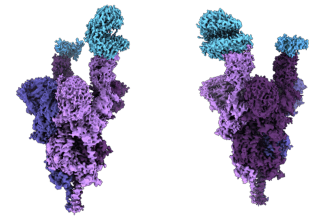Canada sees ‘steady increase’ in BQ variants as COVID hospitalizations, deaths decline – National | Globalnews.ca
There has been a steady increase in immune-evasive Omicron variants across Canada, Health Canada’s latest COVID-19 epidemiology report shows.
Clinical sequencing found some variants like BQ.1, BQ.1.1 and BF.7 on the rise in recent weeks. BQ 1.1 increased by 2.5 percentage points, from 5.9 per cent in the week of Oct. 30 to 8.4 per cent in the week of Nov. 6.
However, according to the report, previously dominant BA.5.2 and BA.5.2.1 lineages seem to be declining.
Read more:
Omicron changed the course of the pandemic 1 year ago and still dominates. What’s next?
Read More
-
![]()
Omicron changed the course of the pandemic 1 year ago and still dominates. What’s next?
BQ.1 and BQ.1.1 variants are one of the sub-lineages of the BA.5 Omicron variant, according to the World Health Organization (WHO).
The BQ variants both contain genetic mutations that make it harder for the immune system to recognize and neutralize the virus, which results in more people getting infected with COVID-19, Reuters reported.
For the week of Nov. 13 to Nov. 19, Canada had 15,085 COVID cases as compared to 15,682 cases for the week of Nov. 6 to Nov. 12, followed by a continued decline in virus-related deaths and hospitalizations.
Ontario was found to have the highest numbers with 5,730 cases, and Quebec came in second with a total of 5,324 cases.
Ontario saw a decline in cases compared to the last period, which saw 6,863 cases.

The number of COVID-related deaths for the week of Nov. 13 to Nov. 19 was 267, with Ontario once again recording the highest number of 111 deaths.
Between Nov. 14 and Nov. 21, the total number of hospital beds occupied by patients with COVID-19 decreased from 5,638 to 5,457 beds and the number of COVID-19 patients who were mechanically ventilated in intensive care units increased from 103 to 111.
Despite data showing a decline in COVID-related hospitalizations in Canada compared to previous months, there has been a surge of influenza and respiratory illness across the country over the past months.

Canadians will likely encounter one or more of these viruses “as long as influenza, RSV, SARS-CoV-2 and other respiratory viruses continue to co-circulate at a high level,” said Canada’s chief public health officer Dr. Theresa Tam in her Nov. 25 remarks.
She added that maintaining “good habits” such as frequent handwashing and wearing a mask can help reduce the risk of infection.
“Likewise, covering coughs and sneezes and staying home if you develop symptoms are key measures you can take to reduce the risk of spreading infection to others,” said Tam.
“For the time being, it makes sense to dial up our vaccines plus practices to increase our level of protection, particularly in light of our extremely stretched health systems and the large impact on pediatric hospitals,” said Tam.
In June, Tam said COVID-19 vaccine efficiency would significantly over time — from 50 to 80 per cent effectiveness down to 20 per cent or lower six months after the second dose — she has recommended Canadians to be “up to date” with their vaccines instead of limited to a specific number of doses.
As of Nov. 6, 83.1 per cent of Canadians have received at least 1 dose of a COVID-19 vaccine, while 80.4 per cent of Canadians have completed primary series of two does, according to Health Canada.
Only 50 per cent of Canadians have received their first booster shot and 18.7 per cent have received their second booster shoot.
Read more:
Twitter no longer enforcing COVID-19 misinformation policy after Musk takeover
Here is a breakdown of the number of COVID-19 cases in Canada in the week of Nov. 13 to Nov. 19:
British Columbia: 495
Alberta: 1,378
Saskatchewan: 435
Manitoba: 314
Ontario: 5,730
Quebec: 5,324
New Brunswick: 436
Price Edward Island: 280
Nova Scotia: 526
Newfoundland and Labrador: 149
First Nation reserves: 575
© 2022 Global News, a division of Corus Entertainment Inc.
For all the latest health News Click Here







